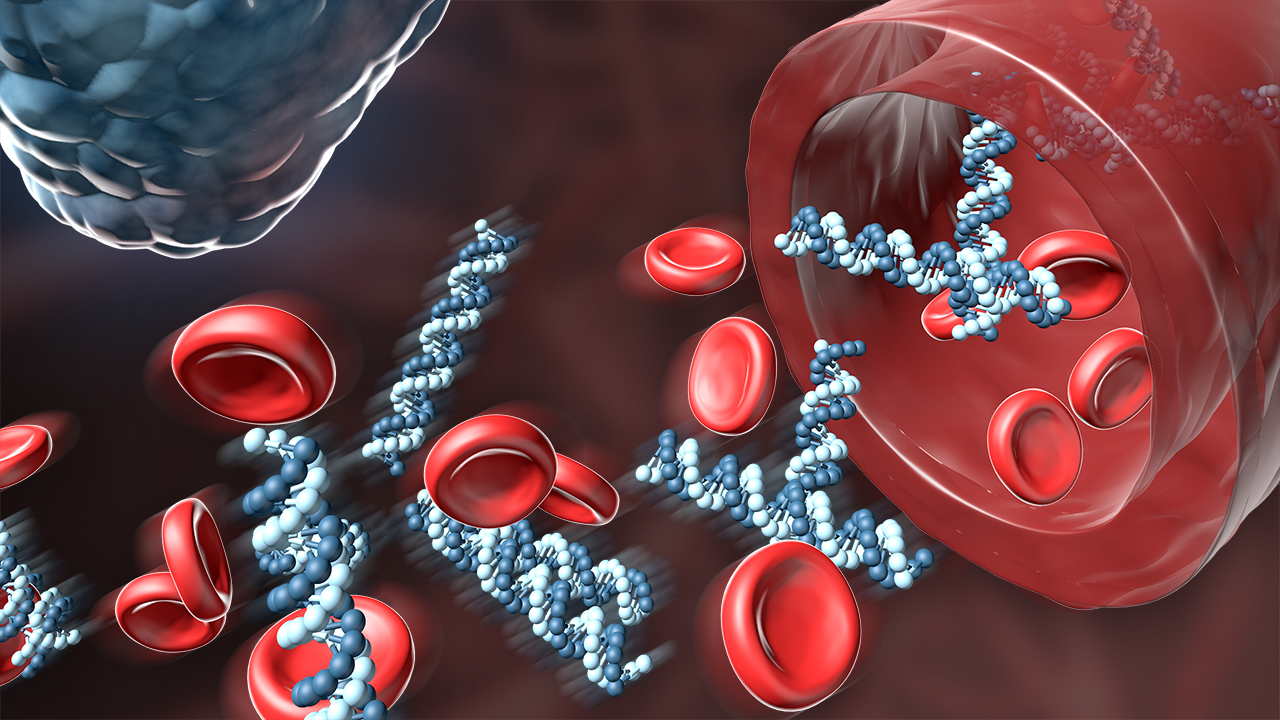Description

Copyright infringement not intended
Context: Cell-free DNA (cfDNA) is a type of DNA that circulates in the bloodstream, released by dying cells. It was first discovered in 1948, but it took more than half a century for scientists to realize its potential applications in medicine.
Details
- cfDNA is seen as a promising biomarker for detecting and monitoring various diseases, such as cancer, infections, and organ transplant rejection. By analyzing the quantity and quality of cfDNA in a blood sample, doctors can gain insights into the health status of their patients and tailor treatments accordingly.

Background
- The genome of a human being consists of DNA molecules that are organized and stored inside the cells with the help of specialized proteins. These proteins ensure that the DNA is protected from damage and degradation. However, there are some situations in which small pieces of DNA can escape from their cellular compartments and circulate in the body fluids. These tiny pieces of nucleic acids are called cell-free DNA (cfDNA).
- cfDNA was first discovered in patients with systemic lupus erythematosus, an autoimmune disease that causes the immune system to attack the body's cells. Since then, many other applications of cfDNA have been explored, such as detecting fetal DNA in maternal blood, identifying genetic mutations in cancer cells, or monitoring organ transplant rejection.
- The existence of cfDNA in body fluids has been known since 1948, but it was not until the recent advances in genome sequencing technologies that scientists were able to exploit this knowledge for various applications.
A Useful tool
- cfDNA, or cell-free DNA, is a type of DNA that is released from cells into the bloodstream or other body fluids. It can provide valuable information about the health and status of different cells and tissues in the body. For example, cfDNA can reveal the presence of cancer, infections, autoimmune diseases, or pregnancy complications.
- cfDNA is produced when cells die and their DNA is broken down into smaller fragments. The amount and size of cfDNA can vary depending on the type and number of cells that are dying, as well as the mechanisms that cause cell death. Some processes that can affect cfDNA levels are normal cell turnover, inflammation, tissue injury, or tumour growth.
- cfDNA is a useful tool because it is easy to obtain from a blood sample or other body fluid, and it reflects the current state of the cells and tissues in the body. By analyzing cfDNA, researchers and clinicians can gain insights into the molecular mechanisms of diseases and develop better ways to diagnose, treat, and monitor them.
Key applications of cfDNA
- Non-Invasive Prenatal Testing (NIPT): cfDNA analysis from maternal blood can be used to screen for chromosomal abnormalities in the developing fetus, such as Down syndrome (trisomy 21), Edwards syndrome (trisomy 18), and Patau syndrome (trisomy 13). This method has significantly reduced the need for invasive procedures like amniocentesis or chorionic villus sampling, which carry certain risks to the mother and fetus.
- Cancer Detection and Monitoring: Tumor-derived cfDNA, known as circulating tumour DNA (ctDNA), can be detected and analyzed in a cancer patient's blood to provide information about specific genetic mutations present in the tumour. cfDNA analysis can help with early cancer detection, monitoring treatment response, detecting minimal residual disease, and identifying the emergence of drug resistance.
- Transplant Rejection Monitoring: After organ transplantation, cfDNA analysis can be used to monitor the recipient's blood for donor-derived cfDNA (dd-cfDNA) to detect early signs of organ rejection. This non-invasive approach allows for timely intervention and adjustment of immunosuppressive therapy.
- Liquid Biopsy: cfDNA analysis serves as a "liquid biopsy" that allows the characterization of genetic alterations in tumours without the need for invasive tissue biopsies. This is particularly useful in cases where obtaining tissue samples is challenging or risky.
- Infectious Disease Diagnostics: cfDNA analysis can be used to identify the presence of pathogen-derived DNA in body fluids, aiding in the diagnosis and monitoring of infectious diseases.
- Monitoring Disease Progression and Treatment Response: cfDNA analysis can be applied to various diseases, including cardiovascular diseases, neurological disorders, metabolic disorders, and autoimmune conditions, to track disease progression and assess the effectiveness of treatments.
- Early Detection of Diseases: cfDNA analysis has the potential to detect diseases at early stages, allowing for timely intervention and improved patient outcomes.
- Forensic Applications: cfDNA can be used in forensic investigations, such as identifying individuals from trace amounts of DNA in crime scene samples.
- Personalized Medicine: cfDNA analysis can provide valuable genetic information about an individual's health, helping to guide personalized treatment decisions based on their unique genetic profile.
- Research and Drug Development: cfDNA analysis is used in biomedical research to gain insights into disease mechanisms, identify potential drug targets, and assess drug efficacy in clinical trials.

Conclusion
- Overall, cfDNA analysis has revolutionized the field of diagnostics and research by providing a non-invasive and accessible source of genetic information with applications spanning various medical disciplines. As technology continues to advance, the range of applications for cfDNA is expected to expand further, contributing to improved patient care and disease management.
|
PRACTICE QUESTION
Q. What is cfDNA?
A) DNA found within the cells
B) DNA that circulates freely in body fluids outside of cells
C) DNA used for prenatal testing
D) DNA extracted from cancer cells
Answer: B
Explanation: DNA that circulates freely in body fluids outside of cells. cfDNA, or cell-free DNA, refers to small fragments of nucleic acids that are released from cells and found outside the cell in body fluids.
|
https://www.thehindu.com/sci-tech/science/cell-free-dna-cancer-screening-high-risk-pregnancy/article67135117.ece















